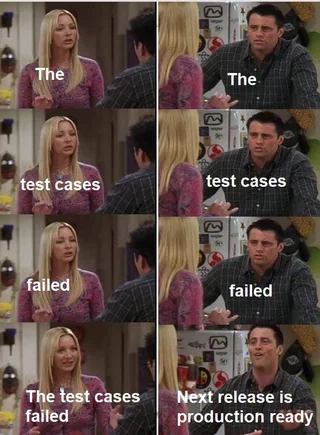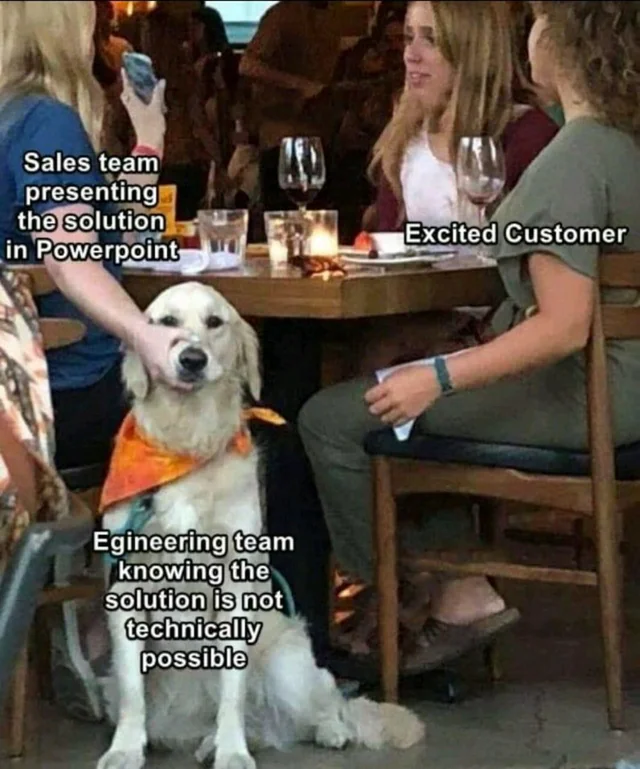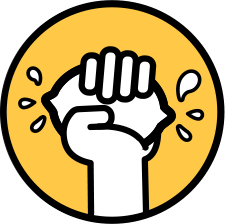Why Engineering Teams Should Think Like Product Teams
A few years ago, a large fintech company spent eight months building a complex internal dashboard designed to “streamline operations”. The engineering team followed specs to la letra, wrote clean code, and hit every sprint goal. But when the product launched? Crickets. Barely anyone used it.
This isn’t just anecdotal. According to Pendo’s Feature Adoption Report, 80 % of features in the average software product are rarely or never used, resulting in approximately $29.5 billion per year of wasted development in public cloud companies.
And recent analysis confirms this pattern: only 5 % of features drive most user activity, while unused functionality contributes to higher churn.
Why is this happening? Because engineering teams often build the thing right, but without validating that it's the right thing.
Whats does it mean? Shipping features is easy.
Shipping useful features? That requires product thinking.
It’s time for engineering teams to close the mindset gap, and start building with outcomes, not outputs. Let’s see how.
What does Product Thinking mean?
Before we talk about engineers adopting product thinking, let’s define it properly.
Product thinking is a mindset where decisions are guided by user value, business outcomes, and context (and not just technical requirements). It’s about understanding why something is being built, for whom, and what success looks like once it’s shipped.
Unlike task-oriented execution, product thinking prioritizes:
✅ Problem-first approaches: what user or business pain are we solving?
✅ Outcome over output: are we driving behavior change, adoption, or retention—not just shipping code?
✅ System-level awareness: how does this piece fit into the product, the business, and the market?

What product thinking means for Engineers
Adopting a product mindset as an engineer doesn’t mean becoming a PM. It means expanding your perspective beyond the Jira ticket and thinking in terms of value delivered (and not just tasks completed). Here’s what that looks like in practice:
1. Understand the problem before writing code
Instead of asking “What do you want me to build?”, ask “What problem are we solving?”. Engineers with product thinking join discovery conversations, review user feedback, and question assumptions in the spec. They care about the why behind the feature, not just the how.
2. Prioritize user empathy
Product-minded engineers care deeply about UX, even if they don’t own the design. They look at flows, edge cases, loading states, error messages, and micro-interactions with the end-user in mind.
3. Focus on outcomes, not features
Rather than measuring success by merge requests or sprint velocity, focus on the impact: Did it improve signups? Increase engagement? Reduce drop-off?
4. Embrace iteration and learning
Product-minded engineers are comfortable releasing incrementally, measuring, and refining. They challenge the idea of “one-and-done builds” and push for feedback loops post-launch.
5. Collaborate upstream, not just in delivery
You join discussions early. You’re not just handed specs, you co-shape them with designers and PMs. This leads to smarter scope, fewer handoffs, and better solutions.
True cross-functional collaboration between Product and Engineers
Cross-functional collaboration is one of those terms that gets thrown around in every agile manifesto and team onboarding. But true collaboration (where product managers and engineers actively co-own outcomes from day one) is still rare.
Most teams operate in what's known as a “feature factory” model: product decides what to build, design sketches how it should look, and engineering is tasked with delivering it on time. The result? Misalignment, rework, and solutions that are technically sound but strategically weak.
If engineers are only involved during execution, you’re just handing off tasks.

What true collaboration looks like
1️⃣ Shared ownership of the problem space
Engineers define themselves by finding solutions. That means sometimes they should be present in user interviews, brainstorming sessions, and prioritization debates.
2️⃣ Joint decision-making on scope and trade-offs
Product brings the context. Engineering brings the constraints. Together, they converge on the most viable solution.
3️⃣ Continuous collaboration throughout the lifecycle
From kickoff to delivery to iteration, both sides remain engaged. Engineers share insights from logs, metrics, and user behavior. Product adjusts based on real-time feedback.
4️⃣ Respect for each other’s domain (but no silos)
Product doesn’t dictate scope without technical input. Engineering doesn’t push back with “it’s not in the spec”. Instead, there’s dialogue, negotiation, and mutual accountability.
The benefits of Product Thinking in engineering
When engineering teams adopt product thinking, it transforms how products are scoped, validated, shipped, and learned from. The result: better outcomes, happier teams, and less waste.
- Less rework, fewer surprisesAccording to the Standish Group’s CHAOS Report, only 16.2% of IT projects are delivered successfully (on time, on budget, and with required features). The rest are either challenged (52.7%) or fail completely (31.1%). When engineers participate from the problem-definition phase flag risks early, challenge weak assumptions, and avoid building the wrong thing.
- Faster learning and smarter iterationMcKinsey reports that tech-forward organizations achieve up to 35% higher revenue growth and 10% higher margins, driven by faster feedback loops and improved product decisions. Engineers who understand product metrics like activation, retention, and churn drive experiments. That’s what accelerates learning and enables real product innovation.
- Better business alignment, less wasteIn teams where engineers think in terms of product outcomes (and not just implementatio) they challenge unnecessary complexity and push for value-driven scope.
- Higher morale and stronger retentionWhen engineers are part of defining what gets built, and why, they feel ownership. According again to McKinsey, shared business/tech goals are one of the biggest predictors of job satisfaction and long-term retention.
How to drive the mindset shift
Shifting an engineering culture from task execution takes intentional changes (small, sustained moves that reshape how teams collaborate, how success is defined, and how impact is measured).
The first step is aligning around outcomes. Many teams confuse collaboration with tool integration: shared Slack channels, Jira boards, or design files in Figma. But real alignment starts with shared goals. That means making product metrics, like activation rate, retention, or NPS, the north stars for everyone, not just the product team. If your sprint goals are still based on number of tickets completed, you're optimizing for the wrong thing. Reframing sprint objectives around business impact (say, increasing onboarding completion by 10%) gives engineers purpose, not just tasks.
To think like product people, engineers need exposure to real-world context. That includes user interviews, analytics reviews, usability sessions, and yes, unfiltered customer feedback. If they don’t see how users behave, or struggle, they’ll keep building based on assumptions.
But access isn’t enough if it comes too late. One of the most powerful levers for change is involving engineers in product discovery. When engineers participate early, they help shape smarter, leaner solutions. Discovery squads that include PMs, designers, and engineers from the beginning tend to produce better scoped, more technically feasible outcomes. Companies like Intercom have made this a core part of their process: engineers are expected to challenge assumptions, not just implement them.
Another key factor is redefining how engineering success is measured. If the only metric that matters is velocity, then teams will optimize for speed over value. Instead, organizations should reward engineers for improving outcomes: faster load times, higher activation, better conversion, or even uncovering insights that invalidate faulty assumptions. A failed experiment that surfaces a critical user need should be considered a win, not a setback.
This shift also requires a new kind of relationship between product and tech: one based on enablement, not control. It’s about building shared rituals where both sides contribute equally: roadmap reviews, post-mortems, metric deep-dives. PMs need enough technical fluency to collaborate effectively. Tech leads need enough product understanding to advocate for user and business outcomes. Cross-functional is about moving in the same direction with shared awareness.
Finally, none of this sticks without leadership modeling the mindset. Engineers won’t start thinking in outcomes if their tech leads never ask “why”. PMs won’t share context early if they treat discovery as their domain alone. Change starts with leaders who challenge roadmaps, use data to frame decisions, and see product development as a shared responsibility.
Driving this shift isn’t easy. But the payoff is massive: less waste, faster learning, stronger teams, and better products. But let’s see some technical practices so you can help your team.
Technical practices that support Product Thinking in engineering
Adopting a product mindset also requires changing how we model, build, and ship software. Below are practical, engineering-level techniques that help bridge the gap between product and tech:
1. Domain-Driven Design (DDD): build from the problem space
Domain-Driven Design puts the business domain at the core of your architecture. Even partial adoption sharpens alignment between tech and real-world needs.
- Ubiquitous Language: product, design, and engineering speak the same language. Concepts like “activation” or “retention” show up in your code models, entities, and events.
- Bounded Contexts: split systems by business capability, not technical layers. This creates focused, autonomous teams with clear ownership.
- Aggregates & Value Objects: structure code around business behavior and rules, not just CRUD and persistence logic. Favor consistency boundaries and encapsulation of domain invariants.
✅ Use this: lightweight Event Storming sessions with PMs, UX, and engineers. Map user events, commands, and domain objects on a wall before coding. Two hours can surface edge cases, complexity, and blind spots that specs usually miss.
2. Measure impact in code, not just in dashboards
Product-minded engineers ship with telemetry baked in. If you’re waiting for someone else to tell you whether a feature worked, you’re already late.
- Instrument real behavior: events like “User signed up”, “Feature used”, or “Churn risk triggered” are first-class citizens—log them.
- Use tools like Amplitude, Mixpanel, PostHog, or build your own pipeline. What matters is visibility, not vendor.
- Metrics belong in shared dashboards—real-time, accessible, actionable. Not buried in logs, not hidden in weekly reports.
✅ Use this: Create a minimum viable instrumentation checklist. If a feature ships without tracking key behavior, it’s not done.
3. Use feature toggles and controlled experiments
Product thinking means learning fast—and that starts with control. Don’t launch blind. Release smart.
- Implement feature flags to toggle functionality, test with segments, or run internal previews.
- Run lightweight A/B tests or progressive rollouts. Measure impact before going full-scale.
- Use toggles to separate delivery from release—code can ship without being live.
✅ Use this: LaunchDarkly, Unleash, Firebase Remote Config, Flagger (for Kubernetes), or build your own with a DB-backed admin panel. The point isn’t the tool—it’s making testing the default.
4. Event-Driven Architecture: real-time insight, real-time value
Event-driven systems turn user behavior into signals—instantly. No polling, no delays, no guesswork.
- Emit domain events like “UserActivatedAccount” or “FileUploaded” to trigger downstream workflows.
- Power real features: nudges, retention loops, automated follow-ups—all based on actual usage, not assumptions.
✅ Use this: A background service consumes inactivity events and triggers targeted notifications—not because someone thought it was time, but because the system saw it happen.
5. Refactor for value, not just for clean code
Refactoring isn’t about elegance—it’s about removing friction that blocks product velocity.
- Focus on code that slows delivery, causes regressions, or adds risk in high-impact flows.
- Ask the right questions: “What’s stopping us from shipping faster?” “Where’s the friction killing user value?”
- Prioritize refactors that unlock outcomes—not just better structure.
✅ Use this: Log and share refactors that moved the needle—conversion, reliability, performance. Clean code is great, but measurable impact is better.
Ready to build with purpose?
At Acid Tango, we co-create products with real impact. We question assumptions, dive into user behavior, and make decisions based on what moves the needle.
Whether you’re launching an MVP, scaling an existing product, or rebuilding a legacy platform, we’ll help you align product and tech from day one (so you’re not just building things right, you’re building the right things).
